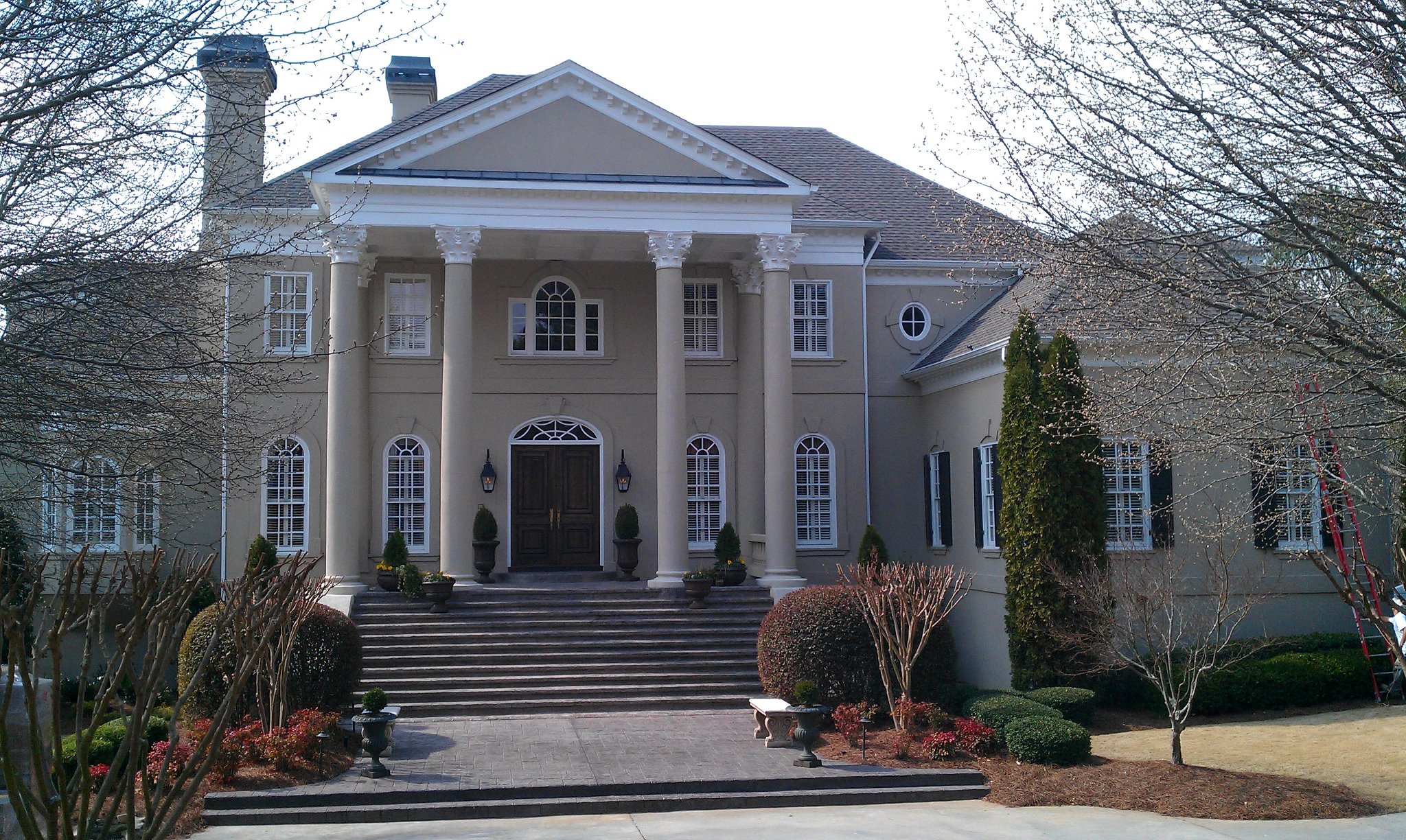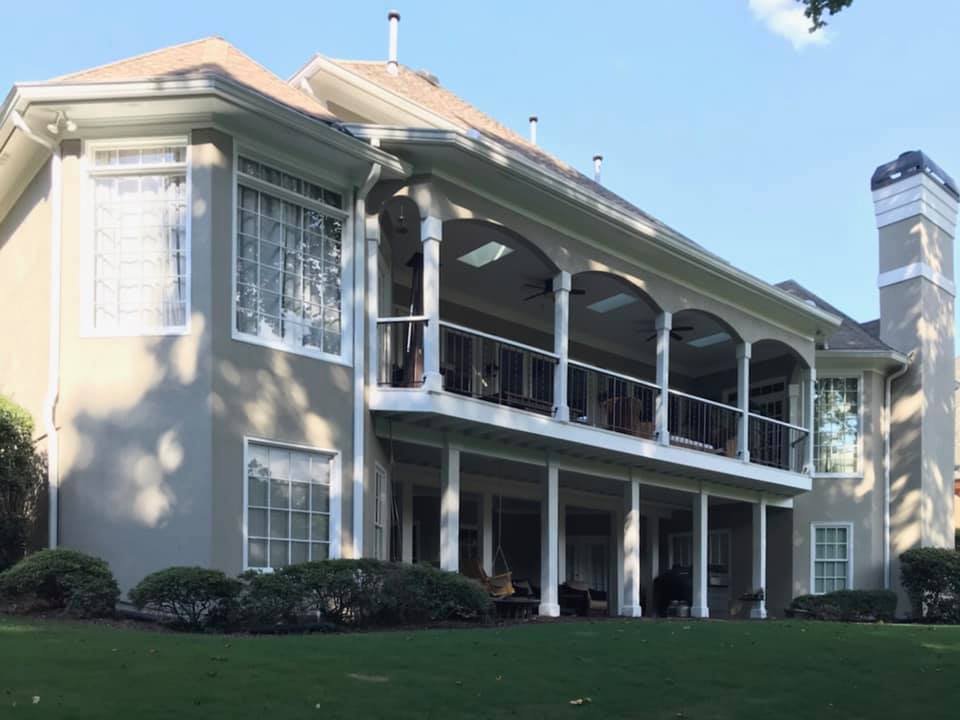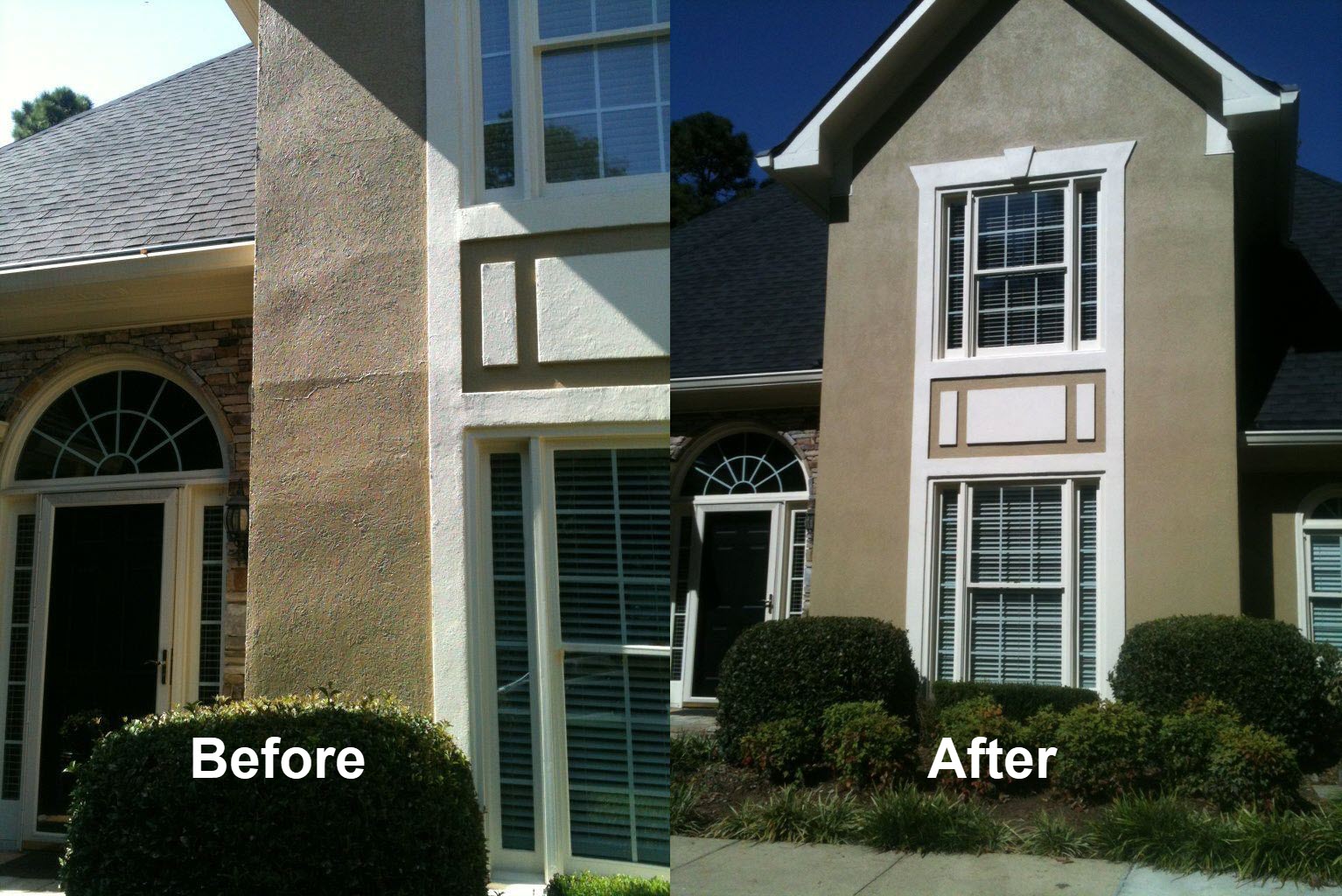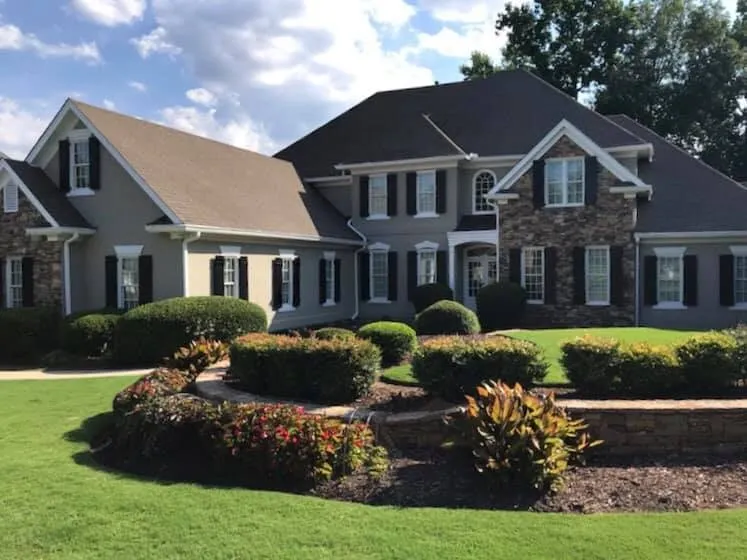Stucco Moldingin Macon GA
Stucco Molding: Add Elegance to Every Facade
We Are Locally Owned & Operated For Over 24 Years
We Serve Businesses In And Around The Following Cities:
About Stucco Moldings in Macon, Georgia
Advanced Stucco Repair: Premiere Stucco Molding Services in Macon, Georgia
The Art and Science of Stucco Molding
Stucco Molding represents an essential part of the aesthetic and functional appeal of many buildings in Macon, Georgia, and beyond. Whether applied to residential homes or grand commercial properties, the use of stucco creates a beautiful facade that is both visually pleasing and highly durable. As stucco continues to gain popularity, the role of professionals such as Advanced Stucco Repair becomes increasingly vital. The company is well-regarded for its expertise in installation and repair, offering a seamless blend of artistry and technical skill.
In building profiles, the presence of beautifully executed stucco molding adds depth and character. This process often involves the use of foam molding for stucco, a modern technique that combines traditional artistry with contemporary materials. Foam trim molding stucco serves as a versatile option, providing lightweight solutions that are easy to work with and impactful in design. Many homeowners opt for stucco molding trim for its neat, finished look around windows and doors, while larger commercial projects may use extensive stucco molding around windows to create a sophisticated finish that enhances the building's commercial appeal.
Installation Techniques of Stucco and EIFS
The process of stucco installation demands precision and skill, ensuring both aesthetic and structural integrity. The first step involves preparing the surface, a critical stage in which Advanced Stucco Repair excels. Proper surface preparation helps ensure adhesion, preventing issues such as cracking or detachment. Next, a base coat is applied, setting the groundwork for the following layers. This meticulous attention to each application phase is crucial to achieving a long-lasting and attractive finish.
Among the innovations in the stucco industry is the EIFS (Exterior Insulation and Finish System), a multi-layered exterior finish that provides superior insulation and moisture control while delivering a dynamic range of textures and colors. EIFS installations require expertise, where the meticulous application of layers forms a protective and decorative barrier. Advanced Stucco Repair brings proficiency in employing both traditional stucco and EIFS, adeptly handling installations tailored to Macon’s diverse architectural styles and the region’s climatic needs.
Stucco Repairs: Maintaining Integrity and Appearance
Despite its durability, stucco can require repairs over time due to weathering or accidental damage. Cracks, chips, and stains are common, but with the skilled repair services offered by Advanced Stucco Repair, such issues can be efficiently resolved. Experts in the field will assess the damage, removing any loose stucco and repairing underlying structures to restore the surface. This process not only maintains the wall's structural integrity but also revitalizes its appearance.
Stucco molding exterior door fixtures or stucco window molding elements can also undergo similar wear and tear. The meticulous repair and maintenance of these features breathe new life into the property, ensuring its aesthetic appeal remains undiminished. For businesses, a well-maintained exterior reflects professionalism, potentially increasing foot traffic and enhancing business opportunities in the bustling climate of Macon.
Advantages of Choosing Stucco and Foam Molding
The benefits of choosing stucco for your property are numerous. Primarily, stucco offers excellent weather resistance, an essential feature given Macon’s climate fluctuations. The durability of stucco makes it an ideal choice for both residential and commercial properties seeking long-term payoff from their exterior finishes. Its ability to withstand harsh weather conditions without significant deterioration is one of its key selling points.
Foam molding for stucco also provides several benefits, including its cost-effectiveness and ease of installation. Foam molding is lightweight yet sturdy, reducing the labor-intensive nature of traditional stucco techniques. This material lends itself well to customization, allowing architects and homeowners alike to realize creative visions. Whether it's detailed stucco trim molding or functional enhancements like stucco window molding, the possibilities are virtually limitless. Advanced Stucco Repair is capable of turning these ideas into reality, using foam molding techniques that save both time and money while delivering exquisite outcomes.
Real-World Applications and Impacts for Businesses
Stucco, EIFS, and foam molding techniques are not just for beautifying residential properties; they play a significant role in commercial aesthetics as well. Businesses in Macon are increasingly opting for these materials to boost their curb appeal and improve energy efficiency. A storefront with expertly molded stucco can stand out, making an impactful first impression on clients and customers.
For businesses, such as retail shops or office spaces, the installation of stucco molding around windows and doors provides a professional and inviting look. Establishing regional businesses in a competitive market involves creating an inviting and impressive exterior that draws customers. This application of stucco molding can discernibly alter the appeal of a commercial property, potentially increasing rental value and tenant satisfaction. Advanced Stucco Repair's prowess in crafting such bespoke solutions has made it a popular choice among Macon’s fast-evolving urban and commercial districts.
The Local Expertise of Advanced Stucco Repair
With years of experience in the field, Advanced Stucco Repair has made a significant mark in Macon, Georgia, building a reputation for excellence in both residential and commercial stucco applications. The company’s expertise goes beyond mere installation and repair. It extends to diagnosing potential issues before they evolve into significant problems, offering preventative measures that save both time and costs in the long run.
The importance of choosing a local expert cannot be understated. Local companies like Advanced Stucco Repair understand the regional climatic conditions, building regulations, and specific architectural styles prevalent in Macon. This local expertise ensures every project is tailored to meet unique conditions and customer requirements without compromise. By investing in high-quality workmanship from a trusted local provider, clients can enjoy peace of mind knowing their stucco needs are being expertly managed.
Integrating Modern Techniques with Traditional Practices
The evolution of stucco application has seen remarkable advancements, especially with the integration of modern materials like EIFS and foam molding techniques. However, every new method respects the time-honored traditions that have stood the test of time. Combining these methodologies creates innovative and durable solutions well-suited to both contemporary and historic buildings.
In older buildings, maintaining a balance between restoration and modern functionality often requires delicate handling. Advanced Stucco Repair masters this blend by applying traditional aesthetics complemented by the strength of modern materials, effectively prolonging the life span of historical structures without sacrificing character. This balance of modern and traditional ensures that every project remains both timeless in appearance and robust in practice, abiding by regional historical preservation standards where necessary.
Stucco work, especially stucco molding related services, indeed holds the power to transform and maintain not just individual structures but entire streetscapes. This duality of aesthetic and structural integrity keeps it a favored choice among discerning property owners across Macon, whether revamping a historic abode or giving a modern commercial building a polished finish.
Engaging with a trusted and experienced provider such as Advanced Stucco Repair ensures that from consultation to execution, each phase meets high standards of quality, delivering results that stand up to both aesthetic expectations and practical demands. With such expertise at their fingertips, clients can confidently enhance their properties, securing both their investment and the continued visual allure of their environments.
In drawing together the threads of artistry and architecture, tradition and innovation, Advanced Stucco Repair not only enhances structures but also enriches the lives of those who inhabit them. A modern service that's steeped in tradition serves to remind us that, with expert craftsmanship, our buildings can reflect both the past and present, introducing a sense of timelessness to Macon’s streetscapes that will endure for generations to come.
Stucco Moldings Gallery



Call Us Today to receive your Free Quote for
Stucco Molding in Macon
Serving: Macon, Georgia

About Macon, Georgia
Macon was founded on the site of the Ocmulgee Old Fields, where the Creek Indians lived in the 18th century. Their predecessors, the Mississippian culture, built a powerful agriculture-based chiefdom (950–1100 AD). The Mississippian culture constructed earthwork mounds for ceremonial, religious, and burial purposes. Indigenous peoples inhabited the areas along the Southeast's rivers for 13,000 years before Europeans arrived.
Macon was developed at the site of Fort Benjamin Hawkins, built in 1809 at President Thomas Jefferson's direction after he forced the Creek to cede their lands east of the Ocmulgee River. (Archeological excavations in the 21st century found evidence of two separate fortifications.) The fort was named for Benjamin Hawkins, who served as superintendent of Indian Affairs for the Southeast territory south of the Ohio River for more than 20 years, had lived among the Creek, and was married to a Creek woman. Located at the fall line of the Ocmulgee River, the fort established a trading post with native peoples at the river's most inland point navigable from the Low Country.
Fort Hawkins guarded the Lower Creek Pathway, an extensive and well-traveled American Indian network that the U.S. government later improved as the Federal Road, linking Washington, DC, to the ports of Mobile, Alabama, and New Orleans, Louisiana. Used for trading with the Creek, the fort also was used by state militia and federal troops. It was a major military distribution point during the War of 1812 and the Creek War of 1813. After the wars, it was a trading post and garrisoned troops until 1821. Decommissioned around 1828, it later burned to the ground. A replica of the southeast blockhouse, built in 1938, stands on an east Macon hill. Fort Hawkins Grammar School occupied part of the site. In the 21st century, archeological excavations have revealed more of the fort, increasing its historical significance, and led to further reconstruction planning for this major historical site.
With the arrival of more settlers, Fort Hawkins was renamed "Newtown". After Bibb County's organization in 1822, the city was chartered as the county seat in 1823 and officially named Macon, in honor of Nathaniel Macon, a statesman from North Carolina, from where many early Georgia residents hailed. City planners envisioned "a city within a park" and created a city of spacious streets and landscapes. Over 250 acres (1.0 km) were dedicated for Central City Park, and ordinances required residents to plant shade trees in their front yards.
Because of the beneficial local Black Belt geology and the availability of slave labor, cotton became the mainstay of Macon's early economy. The city's location on the Ocmulgee River aided initial economic expansion, providing shipping access to new markets. Cotton steamboats, stagecoaches, and the 1843 arrival of the railroad increased marketing opportunities and contributed to Macon's economic prosperity.
Macon's growth had other benefits. In 1836, the Georgia Conference of the Methodist Episcopal Church chose Macon as the location for Wesleyan College, the first U.S. college to grant women college degrees. Nonetheless, Macon came in last in the 1855 referendum voting to be Georgia's capital city with 3,802 votes.
During the American Civil War, Macon served as the official arsenal of the Confederacy manufacturing percussion caps, friction primers, and pressed bullets. Camp Oglethorpe was established as a prison for captured Union officers and enlisted men. Later, it held only officers, at one time numbering 2,300. The camp was evacuated in 1864.
Macon City Hall served as the temporary state capitol in 1864 and was converted to a hospital for wounded Confederate soldiers. Union General William Tecumseh Sherman spared Macon on his march to the sea. His troops sacked the nearby state capital of Milledgeville, and Maconites prepared for an attack. Sherman, however, passed by without entering Macon.
The Macon Telegraph reported the city had furnished 23 companies of men for the Confederacy, but casualties were high. By the war's end, Maconite survivors fit for duty could fill only five companies.
The city was taken by Union forces during Wilson's Raid on April 20, 1865.
Because of its central location, Macon developed as a state transportation hub. In 1895, The New York Times dubbed Macon "The Central City" because of its emergence as a railroad transportation and textile factory hub. Terminal Station was built in 1916. In the 20th century, Macon grew into a prospering town in Middle Georgia.
Macon has been impacted by natural catastrophes. In 1994, Tropical Storm Alberto made landfall in Florida and flooded several Georgia cities. Macon, which received 24 inches (61 cm) of rain, suffered major flooding.
On May 11, 2008, an EF2 tornado hit Macon. Touching down in nearby Lizella, the tornado moved along the southern shore of Lake Tobesofkee, continued into Macon, and lifted in Twiggs County. The storm's total path length was 18 miles (29 km), and its path width was 100 yards (91 m). The tornado produced sporadic areas of major damage, with widespread straight-line wind damage to the south of its path. The most significant damage was along Eisenhower Parkway and Pio Nono Avenue in Macon, where two businesses were destroyed and several others were heavily damaged. The tornado also impacted Macon State College, where almost 50% of the campus's trees were snapped or uprooted and several buildings were damaged, with the gymnasium. The tornado's intensity varied from EF0 to EF2, with the EF2 damage and winds up to 130 miles per hour (210 km/h) occurring near the intersection of Eisenhower Parkway and Pio Nono Avenue.
On July 31, 2012, voters in Macon (57.8% approval) and Bibb County (56.7% approval) passed a referendum to merge the governments of the city of Macon and most of unincorporated Bibb County. The vote came after the Georgia General Assembly passed House Bill 1171, authorizing the referendum earlier in the year; Four previous consolidation attempts (in 1933, 1960, 1972, and 1976) failed.
As a result of the referendum, the Macon and Bibb County governments were replaced with a mayor and a nine-member county commission elected by districts, and a portion of Macon extending into nearby Jones County was disincorporated. Robert Reichert was elected the first mayor of Macon-Bibb in the September 2013 election, which required a runoff with C. Jack Ellis in October.
The Ocmulgee River is a major river that runs through the city. Macon is one of Georgia's three major Fall Line cities, along with Augusta and Columbus. The Fall Line is where the hills of the Piedmont plateau meet the flat terrain of the coastal plain. As such, Macon has a varied landscape of rolling hills on the north side and flat plains on the south. The fall line, where the elevation drops noticeably, causes rivers and creeks in the area to flow rapidly toward the ocean. In the past, Macon and other Fall Line cities had many textile mills powered by the rivers.
Macon is located at 32°50′05″N 83°39′06″W / 32.834839°N 83.651672°W (32.834839, −83.651672). According to the United States Census Bureau, the city has a total area of 56.3 square miles (146 km), of which 0.5 sq mi (1.3 km) (0.82%) is covered by water. Macon is about 330 ft (100 m) above mean sea level.
Macon has a humid subtropical climate (Köppen climate classification Cfa). The normal monthly mean temperatures range from 46.3 °F (7.9 °C) in January to 81.8 °F (27.7 °C) in July. On average, 4.8 days have 100 °F (38 °C)+ highs, and 83 days have 90 °F (32 °C)+ highs, and 43 days with a low at or below freezing; the average window for freezing temperatures is November 7 thru March 22, allowing a growing season of 228 days.
The city has an average annual precipitation of 45.7 inches (1,160 mm). The wettest day on record was July 5, 1994, with 10.25 in (260 mm) of rain, and the wettest month on record was July 1994, with 18.16 in (461 mm) of rain. Since 1892, though, when precipitation records for the city began, two months, October 1961 and October 1963, did not even record a trace of precipitation in the city, and two other months, October 1939 and May 2007, only recorded a trace. Snow is occasional, with about half of the winters receiving trace amounts or no snowfall, averaging 0.7 in (1.8 cm); the snowiest winter was 1972−73 with 16.5 in (42 cm).
| Census | Pop. | Note | %± |
|---|---|---|---|
| 1840 | 3,297 | — | |
| 1850 | 5,720 | 73.5% | |
| 1860 | 8,247 | 44.2% | |
| 1870 | 10,810 | 31.1% | |
| 1880 | 12,749 | 17.9% | |
| 1890 | 22,746 | 78.4% | |
| 1900 | 23,272 | 2.3% | |
| 1910 | 40,665 | 74.7% | |
| 1920 | 52,995 | 30.3% | |
| 1930 | 53,829 | 1.6% | |
| 1940 | 57,865 | 7.5% | |
| 1950 | 70,252 | 21.4% | |
| 1960 | 69,764 | −0.7% | |
| 1970 | 122,423 | 75.5% | |
| 1980 | 116,896 | −4.5% | |
| 1990 | 106,612 | −8.8% | |
| 2000 | 97,255 | −8.8% | |
| 2010 | 91,351 | −6.1% | |
| 2020 | 157,346 | 72.2% | |
| 2023 (est.) | 156,512 | −0.5% | |
| U.S. Decennial Census 1850-1870 1870-1880 1890-1910 1920-1930 1940 1950 1960 1970 1980 1990 2000 2010 2020 | |||
Macon is the largest principal city in the Macon-Warner Robins-Fort Valley CSA, a combined statistical area that includes the Macon metropolitan area (Bibb, Crawford, Jones, Monroe, and Twiggs Counties) and the Warner Robins metropolitan area (Houston, Peach, and Pulaski Counties) with a combined population of 411,898 in the 2010 census.
| Race / Ethnicity (NH = Non-Hispanic) | Pop 2000 | Pop 2010 | Pop 2020 | % 2000 | % 2010 | % 2020 |
|---|---|---|---|---|---|---|
| White alone (NH) | 34,050 | 25,296 | 56,787 | 35.01% | 27.69% | 36.09% |
| Black or African American alone (NH) | 60,503 | 61,768 | 85,234 | 62.21% | 67.62% | 54.17% |
| Native American or Alaska Native alone (NH) | 177 | 146 | 281 | 0.18% | 0.16% | 0.18% |
| Asian alone (NH) | 608 | 683 | 3,209 | 0.63% | 0.75% | 2.04% |
| Pacific Islander alone (NH) | 27 | 28 | 42 | 0.03% | 0.03% | 0.03% |
| Other race alone (NH) | 60 | 97 | 602 | 0.06% | 0.11% | 0.38% |
| Mixed race or multiracial (NH) | 664 | 1,069 | 4,454 | 0.68% | 1.17% | 2.83% |
| Hispanic or Latino (any race) | 1,166 | 2,264 | 6,737 | 1.20% | 2.48% | 4.28% |
| Total | 97,255 | 91,351 | 157,346 | 100.00% | 100.00% | 100.00% |
As of the official 2010 U.S. census, the population of Macon was 91,351. In the last official census, in 2000, 97,255 people, 38,444 households, and 24,219 families were residing in the city. The population density was 1,742.8 inhabitants per square mile (672.9/km). The 44,341 housing units had an average density of 794.6 per square mile (306.8/km). The racial makeup of the city was 67.94% African American, 28.56% White, 0.02% Native American, 0.65% Asian, 0.03% Pacific Islander, 0.46% from other races, and 0.77% from two or more races. Hispanics or Latinos of any race were 2.48% of the population. By the 2020 census, its population increased to 157,346.
Of the 38,444 households in 2000, 30.1% had children under 18 living with them, 33.0% were married couples living together, 25.7% had a female householder with no husband present, and 37.0% were not families. About 31.7% of all households were made up of individuals, and 12.1% had someone living alone who was 65 or older. The average household size was 2.44 and the average family size was 3.08.
In the city, the age distribution was 26.9% under 18, 11.3% from 18 to 24, 27.5% from 25 to 44, 20.0% from 45 to 64, and 14.3% who were 65 or older. The median age was 34 years. For every 100 females, there were 79.7 males. For every 100 females 18 and over, there were 72.8 males.
Prior to 2013, the city government consisted of a mayor and city council. Robert Reichert was elected the first mayor of the consolidated Macon-Bibb County in October 2013. There are also 9 County Commissioners elected from districts within the county.
On March 15, 2019, the U.S. Securities and Exchange Commission charged the former County Manager, Dale M. Walker, with fraud.
Bibb County Public School District operates district public schools.
Public high schools include:
- Central High School
- Howard High School
- Northeast Health Science Magnet High School
- Rutland High School
- Southwest Magnet High School and Law Academy
- Westside High School
Georgia Academy for the Blind, operated by the state of Georgia, is a statewide school for blind students.
Also operated by Bibb County Public Schools:
- Elam Alexander Academy
- Northwoods Academy
Macon is home to several private high schools, many of which were established as segregation academies for parents wishing to avoid the desegration of private schools, with the exception of Mount de Sales Academy.
- Covenant Academy
- First Presbyterian Day School
- Mount de Sales Academy
- Stratford Academy
- Tattnall Square Academy
- Windsor Academy
- The Academy for Classical Education
- Cirrus Academy Charter School
Approximately 30,000 college students live in the greater Macon area.
- Central Georgia Technical College
- Mercer University
- Middle Georgia State University
- Miller-Motte Technical College - satellite campus
- Wesleyan College
